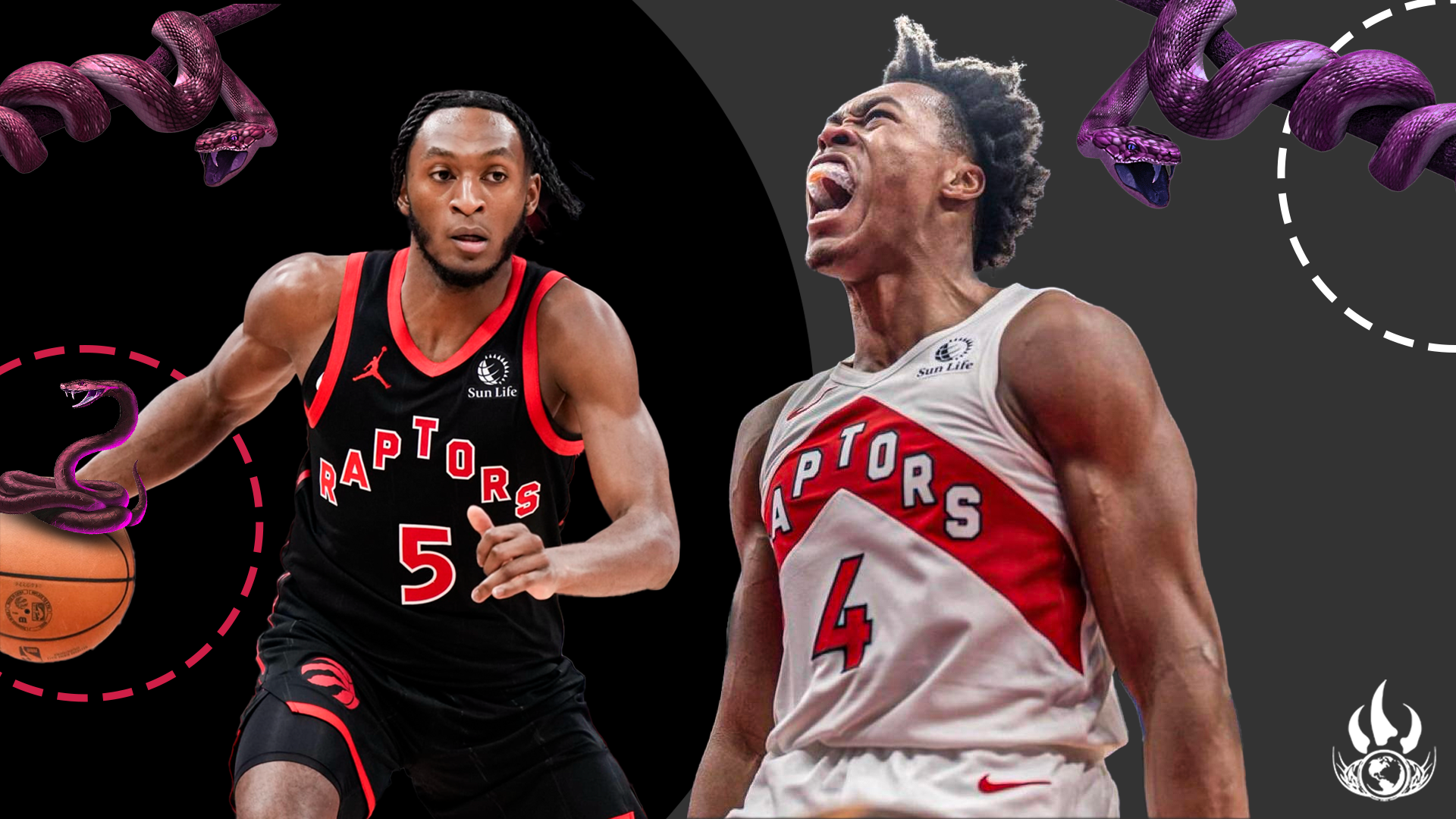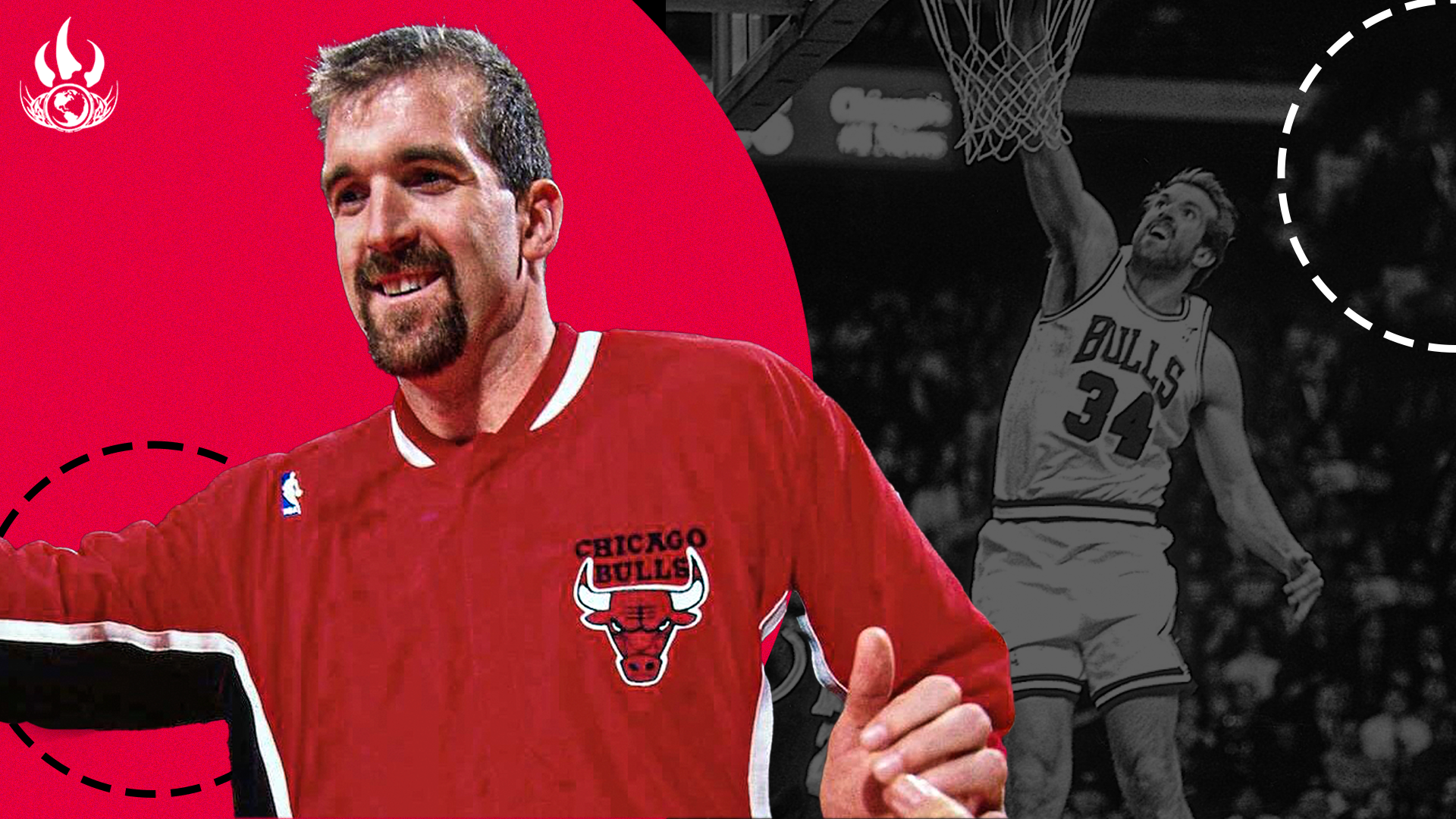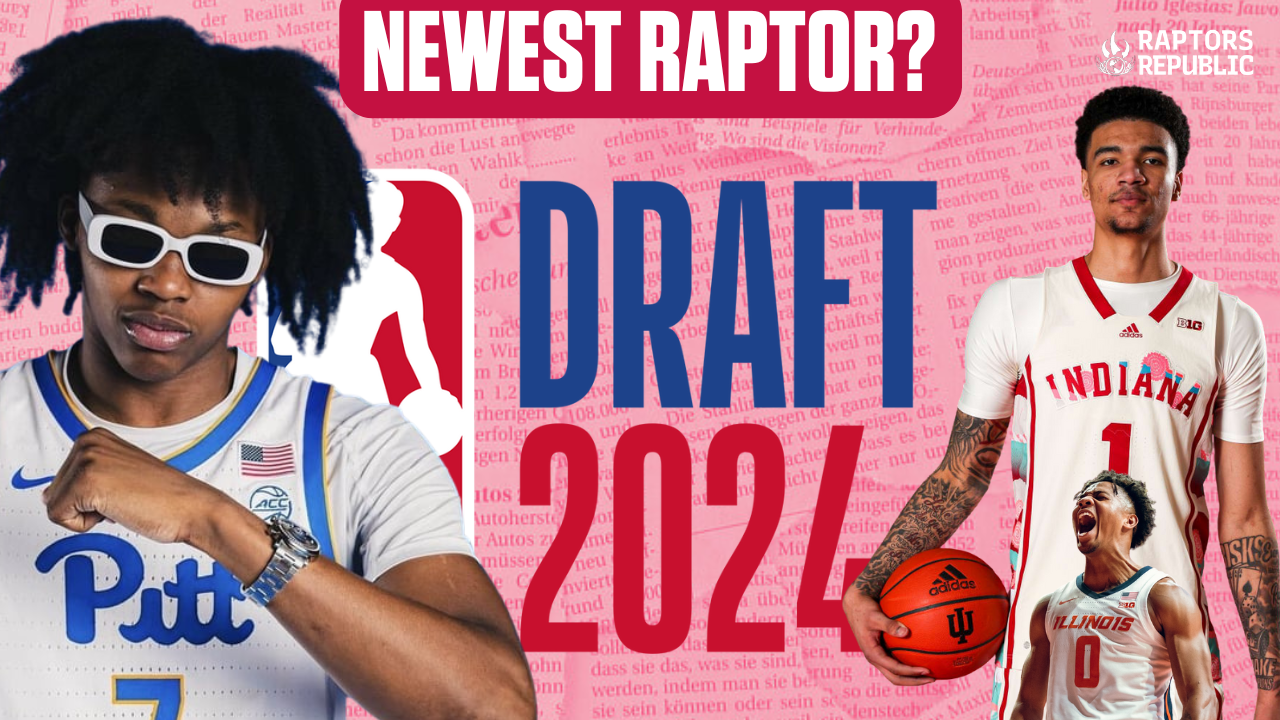There are three minutes remaining in Game 3 of the Dallas Mavericks first-round series against the Los Angeles Clippers. The Mavericks lead by 13, and Kyrie Irving has the ball, looking to end the game. He takes a pick on the wing and positions himself to bend back around the other direction to jet into the middle of the floor, then using an in-and-out dribble to scoot back to the original direction. Then a crossover back to the opposite side of the pick, gathering in a pull-up jumper. He drills it.
There are three minutes remaining in Game 2 of the Denver Nuggets’ first-round series against the Los Angeles Lakers. The Nuggets are down and looking to claw back into the lead. Jamal Murray takes a pick from Nikola Jokic and casually saunters sraight down the lane before turning back the other direction. He slows further and looks to drag the ball back behind the arc, Los Angeles’ Anthony Davis following him. Then Murray twists back towards the rim and accelerates, creating an uncontested layup out of thin air.
Both players snaked the pick and roll, slithering away from the intended direction of the pick, and using that to their advantage. It’s not a commonly used pick-and-roll technique, with even the most skilled practitioners snaking a pick only a few times a game. But the players who most often snake picks are very frequently also among the best pick-and-roll operators: Jalen Brunson, Fred VanVleet, Damian Lillard, James Harden, Devin Booker, Tyrese Maxey, Donovan Mitchell, Anthony Edwards, Tyrese Haliburton, Luka Doncic, Steph Curry, Jamal Murray, just to name a few among the top-25 in picks snaked.
Yet outside of Dennis Schroder (now no longer a Raptor), no Toronto Raptors managed even double-digit snakes last season. (According to tracking data, which does sometimes mislabel such nuanced moments.) It was not an approach that was used very often. Furthermore, Toronto was one of the least frequent and least efficient purveyors of snaking. All told, the 2023-24 Raptors scored only 46 points on possessions that included at least one snaked pick and roll. That was the fifth-lowest total in the league, with the most frequent snaking teams scoring almost 200 points total.
Should the Raptors snake picks more?
Snaking a pick has plenty of advantages. If you think of the half court as a series of lines towards the rim, snaking is a valuable means of shifting the ball from one line to another. It can make a defensive record skip, forcing defenders to shift their coverages in surprising ways, opening up lanes, making rotations happen when they shouldn’t.
Pick-and-roll coverages that try to influence direction — icing (force baseline), weaking (force ballhandler to his weak hand), for example — are particularly susceptible to snakes. From that perspective, snaking is a means of changing lines towards the rim, taking what the defense gives you initially before then twisting into the space on the floor the defense does not want to offer. Conversely, pick-and-roll coverages that generally try to limit drives and keep the ball above the break (in other words, that aren’t trying to control direction) — switching, blitzing, hedging, for example — are less susceptible because there is not space between the screener and handler into which the ball handler can weave. The defense isn’t offering one side of the floor for you to take and limiting the other, so the idea of weaving east-west on the drive isn’t meaningful in such circumstances.
Those are the benefits and the feasible moments of snaking. But which Raptors can and do actually employ the approach?
The Raptor who shares the most commonalities with the snake leaders is Immanuel Quickley. He is jittery and quick. But unlike most of the above leaders, Quickley does not take sharp angles on his picks, particularly the ones he snakes. This is a flaw in his pick-and-roll game, and a fatal flaw when he snakes.
None of those plays saw Quickley reaching the rim (at least on the initial snake). The craft that Irving and Murray displayed — crossovers setting up the snake, change of pace — was absent for Quickley. He stayed in first gear on his drives, took soft, curved angles and then didn’t change them. There were a number of availabilities for better outcomes, too. When dragging the bigs back to the perimeter, Quickley could have tried to turn back to the paint (like Murray) and thrown a quick cross and accelerate to see if he could beat them to the rim. He didn’t see his bigs on their rolls, nor did he try to manipulate rotations to different places (or take advantage of the directions they were headed).
Quickley is most frequently defended by switching, at which he is already fairly competent at beating. He beats it using his strengths. He jets into handoffs immediately after the switch, making the opposing team’s big chase him around screens. Or he can just pull up from deep if the big sits in the paint. He will need to become a better isolation player against switches, but in general he’s equipped to beat switches by turning to his legs and the threat of his shooting. The numbers reflect that, with straight switching yielding among the highest points per chance of any defensive approach to Quickley’s pick and rolls, below only drop-and-under.
Similarly, when Quickley faced a drop or even a higher hedge, he generally scored well as a Raptor. But when Quickley faced icing or weaking, defenses controlling the direction he takes out of the screen, he struggled. Whether teams weaked or iced in preparation to switch, or in combination with a deep or high drop, Quickley didn’t score efficiently. He didn’t crack 0.9 points per possession against any variation of ice or weak, and that was largely because he drove poorly against such coverages. He rarely touched the paint on drives when weaked, and he often looped his drives and picked up his dribble.
Here are three examples: the bad, the okay, and the great.
Note however that in the second video, Quickley does snake his drive, but he stops afterwards and lets his defender recover. He never gets his hips past anyone. Snaking will help him when defenders try to weak his picks, but only when he reads the floor faster and uses change of pace in conjunction with his change of direction. Then of course the third clip: A great snake, using change of pace! (Poeltl’s Gortat screen in the middle of the lane helped.) Quickley blows the layup, of course, but this is terrific process. This is how snaking can benefit Quickley in such moments. And these drives — with the sprayed passes to the corners that open up — would greatly benefit Quickley’s initiation game.
Perhaps it is myopic to focus on snaking when it is such a rarely used tool, but Quickley improving his snaking would improve every facet of his pick-and-roll game. Quicker changes of pace, changes of direction, and deeper dribbles would all lead to better pick-and-roll results, full stop. Issues in snaking is a symptom of issues overall. Quickley is incredibly fast. He has a tight handle. Employing those abilities in more directed manners, more rapidly reading the court and the spaces available, would benefit Quickley massively. With his pull-up shooting ability, he should be one of the better pick-and-roll handlers in the game. Currently, he isn’t. Getting better at snaking would help Quickley get better across the board.
Toronto’s best player at snaking pick and rolls was, unsurprisingly, Scottie Barnes. (Unsurprising because he was more or less Toronto’s best player in every area last season.)
He turned his snakes into rim attacks, very often keeping his feet moving towards the rim even as his body, and the ball, might be changing directions. And because of his incredible size and length, a paint touch generally meant a layup attempt, no matter who was guarding him. That’s not the case for guys like Quickley — if a big is in front of Quickley, that often means a layup attempt will be a bad idea. It doesn’t really matter who is in front of Barnes.
Unlike Quickley, Barnes was statistically terrific against directionally focused pick coverages. He averaged at least 1.0 points per chance against all types of weak and ice coverages, and up to 1.2 against some. (As a reminder, Quickley didn’t crack 0.9.) Barnes reads the floor much faster than Quickley, and he used defensive preferences against opposing shells. Against ice coverage, forcing Barnes baseline, he frequently manipulated direction either before using the action, with spins into the screen or as it evolved, with snakes. Defenses tried to control direction, but Barnes generally won that duel. The hesitation Quickley showed against such coverages was completely absent for Barnes.
But Barnes used snaking against other coverages, too. Barnes used that change of direction as a weapon to drag the screener defender away from the rim and create cutting lanes for his bigs against an ill-protected paint. Though drop defense doesn’t yield as much fertile soil for snaking as weaking or icing, it also has its benefits: opening up a wider rolling lane for the screener. Barnes was terrific at using snakes to do just that against drops. He is a master floor reader, and even though his handle isn’t at the level it needs to be, he is such a brilliant mind on the court that he can still employ tools like snaking to great impact. (And his handle improved greatly last season, too.)
Even though Barnes saw defenses switch less frequently against his picks last season than the one before, he still saw a switching frequency among the top 40 players in the league. (In 2022-23, his picks were defended by switching just over a third of the time, and that shrank to just under a third in 2023-24.) Yet he was much more effective at beating those switches. His jumper was cleaner, and his ability to create from a standstill against a mismatch was improved as well. Snaking won’t help him too often against switches, but it will be a benefit if he forces defenses to switch even less frequently.
The best offenses can control defensive coverages. In chess, white moves first. And by selecting lines, series of moves, white can force black to respond in certain ways, through certain coverages. Decide the pathway through which the game will travel. Basketball is similar. If one pick-and-roll coverage works, defenses will use it until it is beaten. But if offenses have an answer, they can force defenses to respond in certain ways. If you always have an answer, then you win the championship.
The better Barnes gets at beating switches, at creating his own offense with a live dribble against mismatches and forcing doubles, the more weaking, icing, and drop he’ll see. Which in turn will give him more opportunity to manipulate those lines across the court, to use east-west movement and change of pace to switch lines towards the rim. He’s already terrific at it. He just needs more opportunity to use those strengths.
Meanwhile, Quickley’s weakness is against those directionally focused coverages, icing and weaking. He needs to study Barnes’ approach and more quickly and confidently seize space available to him on the court. Or turn defensive goals on their heads. Barnes needs to beat other coverages so snake-friendly coverages are more available to him. Quickley needs to snake better so that he can force defenses away from snake-friendly coverages. Two sides of the same coin.
As it stands, Quickley and Barnes will be Toronto’s two major initiators of offense this upcoming season. And perhaps for a long time afterwards, if all goes well. Both have strengths in that regard, though of course Barnes has more. But snaking is a useful prism through which we can study their individual initiation games. In many ways, they are best in the areas in which the other is weakest. That can yield advantages, but it also means Toronto doesn’t have one complete initiator. The hope is that one of the two seizes that mantle.
Though snaking is rare, it has already popped up in a variety of clutch moments in these playoffs. It matters as a counter, as one of offensive players ’ full sets of available tools. Barnes and Quickley need to improve different areas of their initiation games. And if they do, Toronto can start to see snaked picks in clutch moments of playoff games, too.



